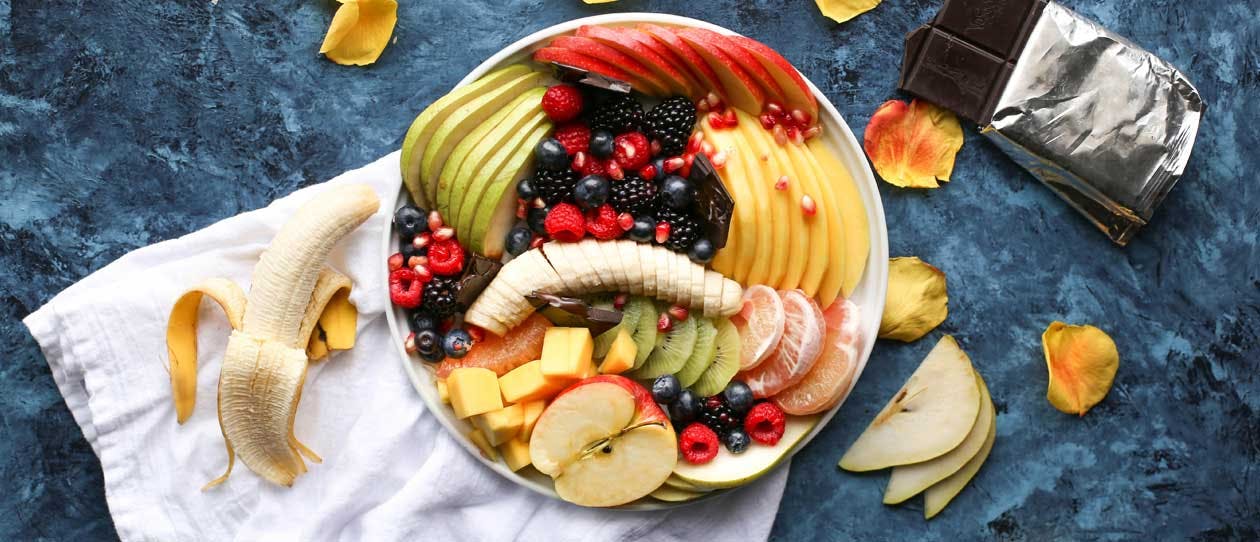Along with grains and vegetables , fruit is a valuable source of
dietary fibre – but some deliver a bigger hit of the all-important nutrient than others. Discover how to make a fibre-rich choice the next time you’re in front of the fruit bowl.
The benefits of eating fruit
It’s no secret that fruit is packed full of nutrients, containing everything from vitamins and minerals to antioxidants - compounds that scavenge and neutralise health-harming free radicals . In addition, fruit is also a rich source of both insoluble and soluble fibre when eaten unpeeled .
Why do we need fibre?
Fibre is vital to good health. While its main job is to keep your digestive system in tip-top shape, that’s not the only role it plays. Fibre has also been linked to supporting heart health, improving cholesterol levels, promoting weight loss and boosting immunity .
While fibre is necessary to keeping us in good health, the fact is that most Australians aren’t eating enough of it. According to a report released by the CSIRO in 2019, around 83 per cent of us aren’t hitting the fibre-intake targets recommended for good gut function and optimal health and wellbeing.
It’s not all bad news, however, as more than half of all Australian adults do currently eat the
recommended ‘at least two serves of fruit a day’. So, with that mind, a tasty way to boost your fibre intake could be by simply eating more fruit.
Fruits with high-fibre content
All fruit contains fibre, but some types provide more of it than others. For example, per 150g, which is considered one serve of fruit :
- Passionfruit = 20.9g of fibre
- Raspberries = 9.1g of fibre
- Kiwifruit = 5.7g of fibre
- Banana = 4.1g of fibre
- Strawberries = 3.8g of fibre
- Apple (with skin) = 3.6g of fibre
- Orange = 3.6g of fibre
- Peach = 3.5g of fibre
- Nectarine = 3.2g of fibre
- Pineapple = 2.7g of fibre
- Blueberries = 2.7g of fibre
- Mango = 2.3g of fibre
Other fruits, like watermelon, rockmelon, honeydew melon and lychee contain smaller amounts of fibre – 2g or less per 150g serve .
Are dried fruits high in fibre?
While the drying process used to turn fresh fruit into dried fruit lowers the level of some nutrients, including vitamin C and folate, the levels of fibre, minerals and most antioxidants remain the same .
In fact, gram for gram, dried fruit can contain more fibre than the fresh variety. For example, there’s 2.6g of fibre in 30g of dried apricot , but only 0.7g in 30g of fresh apricot.
When you compare actual serves, however, it’s the fresh fruit that usually comes out on top in the fibre stakes. For example, while one standard serve of dried apricots (30g) contains 2.6g of fibre, one standard serve of fresh apricots (150g ) contains 3.8g of fibre.
Why is the serving size of dried fruit so small?
As well as being easy to overconsume, dried fruit is a more concentrated source of sugar than the fresh equivalent. A 30g serve of dried apricots contains 24 per cent more sugar than the 150g serve of fresh ones. Dried fruit can also stick to your teeth, which increases the risk of dental decay.
While snacking on dried fruit can help to bump up your fibre intake and a 30g serve is classified as a serve of fruit, according to the Australian Dietary Guidelines, it should only be eaten occasionally.
There are many health benefits of maintaining a diet that is rich in fibre and fruit is not the only type of
food that is high in fibre. A varied healthy diet should ensure you get the recommended daily intake of not just fibre but also other important vitamins and minerals.


